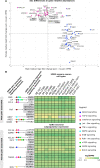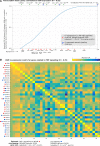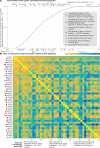RNA profiling of human dorsal root ganglia reveals sex differences in mechanisms promoting neuropathic pain
- PMID: 35867896
- PMCID: PMC10169414
- DOI: 10.1093/brain/awac266
RNA profiling of human dorsal root ganglia reveals sex differences in mechanisms promoting neuropathic pain
Abstract
Neuropathic pain is a leading cause of high-impact pain, is often disabling and is poorly managed by current therapeutics. Here we focused on a unique group of neuropathic pain patients undergoing thoracic vertebrectomy where the dorsal root ganglia is removed as part of the surgery allowing for molecular characterization and identification of mechanistic drivers of neuropathic pain independently of preclinical models. Our goal was to quantify whole transcriptome RNA abundances using RNA-seq in pain-associated human dorsal root ganglia from these patients, allowing comprehensive identification of molecular changes in these samples by contrasting them with non-pain-associated dorsal root ganglia. We sequenced 70 human dorsal root ganglia, and among these 50 met inclusion criteria for sufficient neuronal mRNA signal for downstream analysis. Our expression analysis revealed profound sex differences in differentially expressed genes including increase of IL1B, TNF, CXCL14 and OSM in male and CCL1, CCL21, PENK and TLR3 in female dorsal root ganglia associated with neuropathic pain. Coexpression modules revealed enrichment in members of JUN-FOS signalling in males and centromere protein coding genes in females. Neuro-immune signalling pathways revealed distinct cytokine signalling pathways associated with neuropathic pain in males (OSM, LIF, SOCS1) and females (CCL1, CCL19, CCL21). We validated cellular expression profiles of a subset of these findings using RNAscope in situ hybridization. Our findings give direct support for sex differences in underlying mechanisms of neuropathic pain in patient populations.
Keywords: dorsal root ganglia; neuropathy; pain; pain transcriptomics; transcriptome-wide association study.
© The Author(s) 2022. Published by Oxford University Press on behalf of the Guarantors of Brain. All rights reserved. For permissions, please e-mail: journals.permissions@oup.com.
Conflict of interest statement
The authors report no competing interests. T.J.P., G.D. and P.R.R. are co-founders of Doloromics.
Figures







References
Publication types
MeSH terms
Substances
LinkOut - more resources
Full Text Sources
Other Literature Sources
Molecular Biology Databases
Miscellaneous

